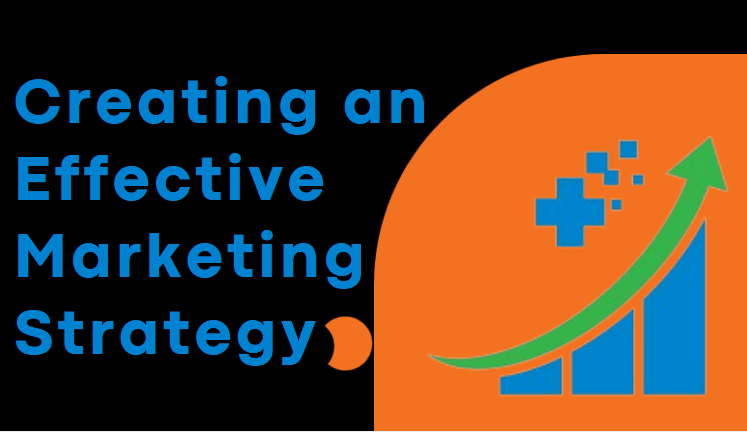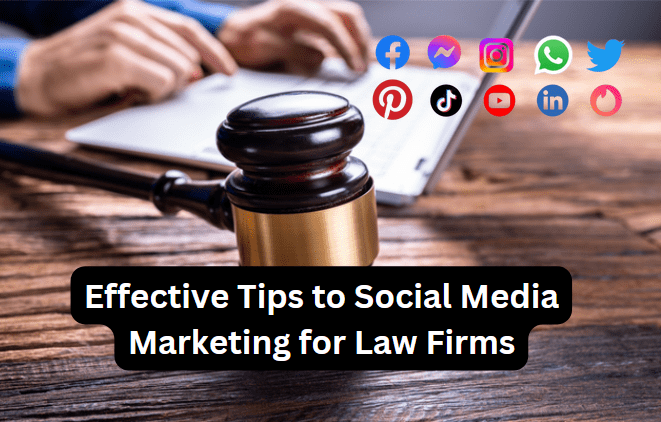Creating a successful marketing strategy involves a combination of understanding your target audience, setting clear goals, and utilizing various marketing channels effectively. In this post, we shall be exploring the most effective 11 steps to creating an effective marketing strategy, and the 10 key components of a successful marketing strategy.
What is a Marketing Strategy?
A marketing strategy is a comprehensive plan or approach designed to promote a product, service, brand, or organization to achieve specific business objectives. It outlines the organization’s goals and the methods it will use to reach and engage its target audience effectively.
A well-developed marketing strategy takes into account various factors such as market research, competitive analysis, target audience identification, positioning, and the marketing mix (product, price, place, and promotion). Don’t miss reading 11 mouth-watering benefits of learning digital marketing that you won’t want to miss.
10 Key components of a marketing strategy includes:
• Market Research: Understanding the market, customer needs, preferences, and trends through thorough research.
• Target Audience: Identifying and defining the specific group(s) of people or businesses that the marketing efforts will focus on.
• Positioning: Determining how the product or brand will be positioned in the market relative to competitors, and what unique value proposition it offers.
• Marketing Mix (4Ps):
o Product: Deciding on product features, design, and branding.
o Price: Establishing the right pricing strategy based on market conditions and perceived value.
o Place: Determining the distribution channels and locations where the product will be available.
o Promotion: Creating a plan for advertising, public relations, and other promotional activities.
• Goals and Objectives: Setting clear, measurable, and achievable goals that align with overall business objectives.
• Budget: Allocating resources and budget for implementing the marketing plan.
• Implementation and Execution: Putting the plan into action and executing the various marketing activities.
• Monitoring and Evaluation: Regularly assessing the performance of the marketing efforts, analyzing data, and making adjustments as needed.
• Adaptability: Recognizing that markets and consumer behaviors can change, and being prepared to adapt the strategy accordingly.
• Integration with Overall Business Strategy: Ensuring that the marketing strategy aligns with and supports the broader goals and mission of the organization.
A successful marketing strategy is dynamic, flexible, and responsive to changes in the market, consumer behavior, and the competitive landscape. It is an essential tool for businesses looking to effectively promote their products or services and achieve long-term success.

Here are 11 steps to help you create a robust marketing strategy:
1. Define Your Goals
Precisely define your marketing goals by providing a comprehensive overview of your strategic objectives. These may encompass a range of key aims such as elevating brand visibility, cultivating a robust lead generation system, amplifying sales figures, or enhancing customer retention efforts. Clearly articulating these objectives will serve as a roadmap for your marketing endeavors, guiding your team towards targeted and effective strategies aligned with your overarching business objectives.
2. Know Your Target Audience
Gain a comprehensive understanding of your target audience by creating detailed buyer personas that delve into their demographics, interests, and pain points. By meticulously crafting these profiles, you can shape your marketing strategy to specifically resonate with the identified ideal customer.
This involves tailoring your messaging to address their unique needs, preferences, and challenges. In essence, the key to successful marketing lies in a deep understanding of your audience and the ability to communicate in a way that truly connects with them.
3. Conduct a SWOT Analysis
Conduct a thorough assessment of your internal and external landscape by critically evaluating your strengths, weaknesses, opportunities, and threats. This comprehensive analysis serves as a foundational tool to shape your strategic approach. Begin by identifying and understanding your strengths, leveraging them to gain a competitive edge. Simultaneously, address your weaknesses, working towards mitigating or overcoming challenges that may hinder your progress.
Explore the external environment for opportunities that align with your organizational goals. Recognize and capitalize on these openings to enhance your overall strategy and foster growth. Additionally, anticipate potential threats that could impact your business negatively. By being proactive in identifying and preparing for these challenges, you can develop contingency plans to safeguard against potential setbacks.
4. Competitor Analysis
Thoroughly examine your competitors to gain insights into both their strengths and weaknesses. This in-depth analysis will provide you with a comprehensive understanding of the competitive landscape. By delving into the strengths of your rivals, you can identify areas where they excel and determine potential benchmarks for your own improvement.
Simultaneously, scrutinize their weaknesses to pinpoint areas where your brand can capitalize and excel. Recognizing these vulnerabilities not only helps you avoid similar pitfalls but also enables you to position your brand strategically in the market.
To stand out in a crowded market, focus on differentiating your brand by crafting and promoting unique value propositions. Understand what makes your products or services distinct and highlight these aspects in your marketing efforts. Whether it’s innovative features, exceptional customer service, or exclusive offerings, emphasizes what sets your brand apart from the competition.
This differentiation not only attracts customers but also builds brand loyalty, as consumers are more likely to choose and stick with a brand that offers something special. By studying your competitors and strategically positioning your brand with unique value propositions, you position yourself for long-term success in a competitive business landscape.
5. Develop a Unique Value Proposition (UVP)
Articulate the distinctive attributes that make your product or service stand out and surpass competitors. Highlight the specific features and advantages that differentiate you from the competition, providing a comprehensive understanding of what sets your offering apart in the market. Clearly outline the unique selling points and benefits that make your product or service a preferred choice for consumers.
6. Choose Your Marketing Channels
Carefully choose the channels that resonate with your specific target audience. This encompasses a diverse range of options, such as social media platforms, content marketing strategies, email campaigns, Search Engine Optimization (SEO) initiatives, Pay-Per-Click (PPC) advertising, and influencer marketing efforts. Also read 6 key differences between marketing and advertising you never knew before now.
Tailoring your channel selection to align with the preferences and habits of your target audience is essential for effective communication and engagement. By understanding where your audience spends their time and consumes information, you can optimize your outreach efforts and enhance the overall impact of your marketing strategy.
7. Integrated Marketing Campaigns
Another very powerful step to help you create a robust marketing strategy is creating an integrated marketing campaigns that traverse various channels, fostering a unified and impactful strategy. Guarantee uniformity in messaging and branding across all platforms to reinforce a cohesive and compelling presence.
8. Content Marketing
Generate high-quality, pertinent, and regular content that directly caters to the specific requirements and interests of your target audience. This content may encompass a variety of formats such as well-crafted blog posts, engaging videos, visually appealing infographics, and more.
The key is to consistently deliver information that adds value to your audience’s experience and meets their expectations. By doing so, you not only establish credibility but also foster a deeper connection with your audience, positioning yourself as a reliable source that consistently addresses their needs and interests.
9. SEO Strategy
Enhance the online visibility of your content by strategically optimizing it for search engines. This comprehensive optimization process encompasses three key elements: keyword research, on-page SEO, and backlink building.
• Keyword Research: Get into meticulous keyword research to identify the most relevant and high-impact terms associated with your content. This involves understanding the language your target audience uses to search for information online. By integrating these keywords naturally into your content, you can significantly enhance its search engine ranking and visibility.
• On-Page SEO: Implement on-page SEO techniques to fine-tune the various elements within your content and web pages. This includes optimizing Meta titles, Meta descriptions, headers, and image alt texts. Ensuring that your content aligns with search engine algorithms and provides a seamless user experience can positively impact its ranking, making it more likely to appear prominently in search results.
• Backlink Building: Cultivate a robust network of backlinks to your content from reputable and relevant sources. Backlinks act as endorsements, signaling to search engines that your content is authoritative and valuable. Engaging in ethical and strategic link-building practices can enhance your content’s credibility and contribute to improved search engine rankings.
By combining these three pillars of optimization – keyword research, on-page SEO, and backlink building – you can establish a strong foundation for your online content, making it more discoverable and attractive to both search engines and your target audience. This holistic approach to optimization not only improves visibility but also positions your content as a valuable resource in the digital landscape.
10. Social Media Engagement
Stay consistently involved on social media platforms that resonate with your target audience. Foster meaningful interactions with your followers by responding to comments, initiating discussions, and actively participating in relevant conversations. Share content that provides genuine value to your audience, showcasing your expertise, insights, and unique perspectives.
In addition to organic engagement, consider incorporating paid advertising strategies tailored to your specific goals. Whether it’s promoting a new product, increasing brand awareness, or driving traffic to your website, leverage the targeting options available on social media platforms to reach your desired audience effectively.
Regularly analyze the performance of your social media efforts through metrics such as engagement rates, click-through rates, and conversion metrics. This data-driven approach will help you refine your social media strategy over time, ensuring that your efforts align with your objectives and resonate with your audience.
By staying active, engaging authentically, and strategically utilizing both organic and paid methods, you can build a strong and dynamic social media presence that effectively connects with your target audience.
11. Email Marketing
Establish and cultivate your email subscriber base by consistently adding new contacts and fostering a strong connection with your existing audience. Delve into the intricacies of personalized communication by tailoring content specifically to the interests and preferences of your subscribers.
This not only sustains their engagement but also ensures they remain well-informed about your offerings, updates, and relevant information. The process involves a strategic approach to content creation and delivery, aiming to provide value and maintain a meaningful relationship with your email recipients.
Remember, a successful marketing strategy is an ongoing process that requires constant evaluation and adjustment. Stay informed about industry trends and be flexible in adapting to changes in the market.




